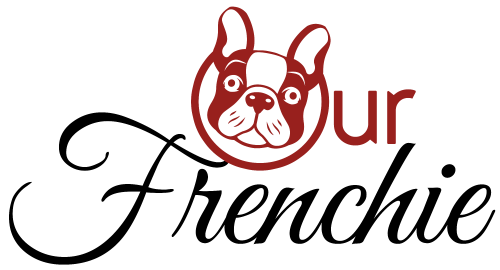About
15 Terms Everyone in the French Bulldogs Industry Should Know
Page Contents

1. Essential French Bulldog Terminology: A Comprehensive Glossary for Industry Insiders
Essential French Bulldog Terminology
In the fascinating world of French Bulldogs, there exists a unique language filled with specialized terms that only industry insiders truly understand. This comprehensive glossary is designed to unravel the mysteries behind these specific terms, ensuring you have a firm grasp of the intricacies of this beloved breed. Prepare to dive into the colorful tapestry of French Bulldog jargon that will not only impress your fellow enthusiasts but also enhance your understanding of this captivating breed.
Bat Ears: One of the defining features of a French Bulldog, bat ears refer to the large, erect ears that resemble the wings of a bat, giving these adorable dogs their unmistakable charm.
Frenchie: An affectionate nickname for French Bulldogs commonly used by enthusiasts, breeders, and proud owners alike. This endearing term encapsulates the playful and loving nature of these quirky canines.
Brindle: A coat color pattern characterized by a mix of dark and light hairs, creating a unique and striking appearance. Brindle French Bulldogs boast a mesmerizing blend of color that sets them apart from other coat variations.
Snoring Symphony: A delightful and somewhat notorious characteristic of French Bulldogs is their tendency to serenade their owners with a chorus of snorts and snores. This endearing trait has become synonymous with the breed’s charm and serves as a sweet reminder of their lovable nature.
By familiarizing yourself with this essential French Bulldog terminology, you can communicate with confidence, navigate breeder conversations, and further immerse yourself in the enchanting world of these captivating canines.

2. Unlocking the Genetics: Understanding Health Factors in French Bulldogs
Delving into the fascinating world of French Bulldog genetics is like opening a treasure chest of insights into their unique health factors. These adorable pooches have certain genetic predispositions that make understanding their health needs essential for responsible ownership. Let’s explore some key genetic factors that play a crucial role in their well-being:
- Brachycephalic Syndrome: French Bulldogs are brachycephalic, meaning they have a short, flattened skull shape. While it adds to their cute appearance, it also brings certain challenges, including potential breathing difficulties.
- Patellar Luxation: This is a common orthopedic issue in French Bulldogs. It occurs when the kneecap becomes dislocated, causing discomfort and hindering their mobility.
- Intervertebral Disc Disease: Due to their unique body structure, French Bulldogs are more prone to developing issues with their spinal discs. This can lead to pain, nerve damage, and mobility problems.
- Allergies: These delightful companions can also often experience allergies, such as food allergies or contact allergies, which may require special attention to their diet and environment.
Understanding the genetic factors that impact French Bulldogs’ health allows us to provide them with the best possible care and support. Remember, while genetics may play a role, individual variations still exist, so regular check-ups and vigilant monitoring are crucial for their overall well-being.
3. Navigating Breeding Regulations: Best Practices for French Bulldog Enthusiasts
When it comes to breeding French Bulldogs, enthusiasts need to be well-informed about the regulations and guidelines in place to ensure the welfare of the breed. Here are some best practices to navigate the complex world of breeding regulations:
- Understand breeding laws and regulations in your country or region.
- Ensure both the male and female bulldogs are in excellent health before mating.
- Consider genetic testing to screen for potential health issues and reduce the risk of passing on hereditary conditions.
- Obtain the necessary permits and registrations required for breeding.
Additionally, it is crucial to prioritize the well-being of the French Bulldogs throughout the breeding process. Always strive for responsible breeding practices by:
- Providing proper nutrition, exercise, and veterinary care to the breeding dogs.
- Allowing adequate recovery time between mating and ensuring there is no over-breeding.
- Maintaining regular communication with other reputable breeders and organizations to stay updated on ethical breeding standards.
By adhering to these best practices and staying informed about breeding regulations, French Bulldog enthusiasts can contribute to the preservation and betterment of the breed while ensuring the health and happiness of these beloved companions.
4. Decoding French Bulldog Colors: An Overview of Coat Variations and Standards
French Bulldogs are known for their adorable and unique coat variations, which come in a wide array of colors. These colors can vary from coat patterns to solid shades, and understanding the different variations is crucial for any French Bulldog enthusiast. Here is an overview of some of the most common coat colors and patterns found in this charming breed: – Brindle: This is perhaps the most well-known French Bulldog coat pattern. Brindle coats consist of a base color with darker stripes that create a mesmerizing pattern. Variations of brindle can range from light to dark, and the intensity of the stripes can vary as well. – Fawn: Fawn-coated French Bulldogs have a solid light tan or beige color. This is a popular choice among many owners due to its beautiful and elegant appearance. The fawn color can range from a pale cream to a deep caramel shade, creating a stunning contrast against their dark eyes and nose. – Pied: This pattern is characterized by large patches of white combined with another color. The patches can be evenly distributed or dominant, giving the dog a unique and eye-catching appearance. Pied French Bulldogs often have a mostly white body with patches of brindle, fawn, or even black. – Blue: One of the more unique coat colors found in French Bulldogs is the blue shade. Blue-coated Frenchies have a dilution of the black pigment, resulting in a soft grayish hue. This color is truly special and often captivating, making these French Bulldogs stand out in a crowd. Whatever coat variation you prefer, it’s important to note that the American Kennel Club (AKC) has specific standards for each color and pattern in French Bulldogs. These standards ensure breed recognition and consistency within the breed. So, the next time you see a French Bulldog with a fascinating coat variation, take a moment to appreciate the beauty and diversity that these wonderful dogs bring to the world.5. Raising a Healthy Frenchie: Diet, Exercise, and Medical Considerations
Diet
A balanced and nutritious diet is vital for raising a healthy Frenchie. Opt for high-quality dog food that is specifically formulated for French Bulldogs to provide them with the necessary nutrients. Aim for a diet that includes a mix of lean proteins, carbohydrates, and healthy fats. Avoid overfeeding and stick to portion sizes recommended by your veterinarian to prevent obesity, a common issue in Frenchies.
- Incorporate fresh fruits and vegetables into their meals as a source of vitamins and minerals.
- Avoid feeding your Frenchie chocolate, dairy, grapes, avocados, and other foods that are toxic to dogs.
- Provide fresh water at all times and keep an eye on their hydration levels, especially during hot weather.
Exercise
Regular exercise is important for maintaining your Frenchie’s physical and mental well-being. Despite their small size, French Bulldogs have a moderate energy level. Aim for at least 30 minutes of exercise per day, which can be a combination of short walks, playtime, and mental stimulation.
- Engage them in interactive toys and puzzle games to keep their minds active.
- Ensure they get regular opportunities to socialize with other dogs and humans.
- Be cautious not to overexert them, as Frenchies are prone to overheating and have difficulty breathing due to their brachycephalic nature.
Medical Considerations
French Bulldogs are susceptible to certain genetic health conditions, so it’s important to stay proactive and monitor their health closely.
- Regularly visit a trusted veterinarian for check-ups, vaccinations, and preventive care.
- Keep an eye out for signs of respiratory issues, skin allergies, hip dysplasia, and eye problems.
- Consider getting health insurance for your Frenchie to help manage potential medical expenses.
6. Recognizing Behavioral Traits: Insight into the Temperament of French Bulldogs
French Bulldogs are known for their unique behavioral traits that set them apart from other dog breeds. Understanding their temperament can help owners better care for and communicate with these adorable companions.
Vocalization: French Bulldogs are notorious for their expressive nature. They have a wide range of vocalizations, from cute snorts and grunts to high-pitched barks and howls. Their communication through sounds is an essential aspect of their temperament.
Curiosity: These little canines have a natural curiosity that often leads them to explore their surroundings. Whether it’s investigating new scents, crawling into tight spaces, or inspecting every object in their path, French Bulldogs have a keen sense of adventure.
Affectionate nature: French Bulldogs thrive on human companionship and love to be close to their owners. They are incredibly affectionate, often displaying their love through snuggling, leaning against their favorite person, or gently placing their paws on their owner’s lap.
Playfulness: French Bulldogs have an inherent playful spirit that brings joy to any household. They can be quite goofy and enjoy interactive games, such as fetch, tug-of-war, or hide-and-seek. Their playful nature makes them great companions for families and individuals alike.
Sociability: These dogs are generally friendly and sociable with both humans and other animals. They love meeting new people and enjoy the company of other well-behaved dogs. Proper socialization from an early age is crucial to ensure they grow into well-adjusted and well-mannered pets.
Recognizing and understanding these behavioral traits can assist owners in creating a harmonious environment for their French Bulldogs. With patience, love, and proper training, these delightful pups will thrive and bring endless happiness to their families.
7. Tips for Responsible Ownership: Ensuring the Well-being of French Bulldogs
Ensuring the well-being of your beloved French Bulldog is paramount as a responsible owner. Here are some tips to keep in mind:
- Provide a nourishing diet: Feed your French Bulldog a balanced diet that meets their nutritional needs. Consult your veterinarian for advice on the best food options and portion sizes.
- Regular exercise: French Bulldogs may not be the most athletic breed, but they still need daily exercise to maintain a healthy weight and promote mental stimulation. Take them for short walks or engage in playtime.
- Maintain a comfortable living environment: Make sure your French Bulldog has a cozy bed, plenty of fresh water, and a safe space to retreat to when needed. Avoid extreme temperatures, as they are more sensitive to heat and cold.
- Grooming and hygiene: Regularly brush your Frenchie’s coat to keep it clean and free from tangles. Additionally, clean their ears and trim their nails as part of their routine grooming.
- Keep up with vaccinations and veterinary visits: Ensure your French Bulldog is up to date on vaccinations and schedule regular check-ups to monitor their overall health and catch any potential issues early.
- Socialization: Expose your French Bulldog to various environments, people, and animals from a young age to promote a well-adjusted and friendly temperament.
- Provide mental stimulation: French Bulldogs are intelligent dogs that need mental challenges to prevent boredom. Puzzle toys, obedience training, and interactive games can keep their minds sharp and engaged.
By following these tips, you can ensure that your French Bulldog lives a happy, healthy, and fulfilling life!

